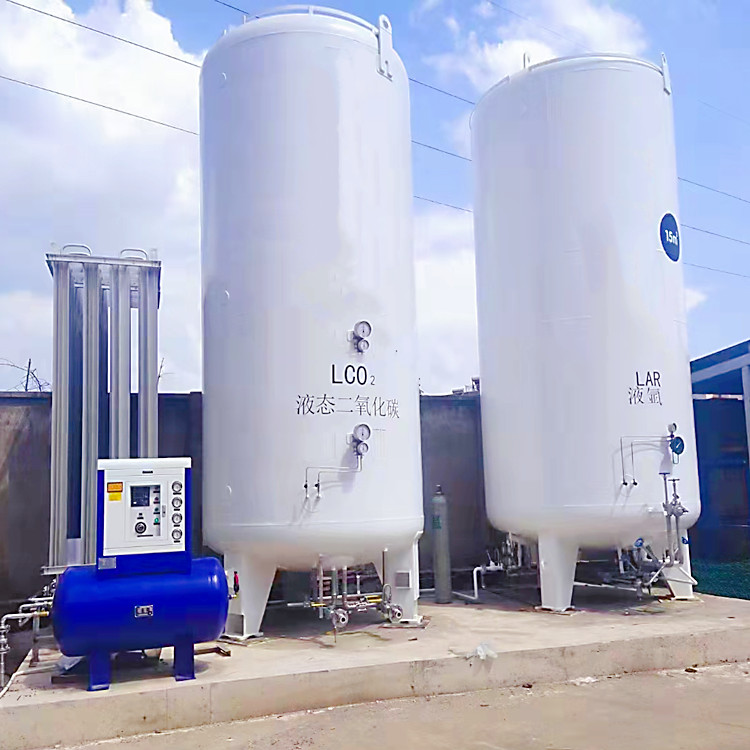What precautions should be taken when using liquid argon storage tanks?
① Strictly control the cooling rate during tank cooling. Maintain the inner tank cooling rate at 3°C/h, with a maximum cooling rate of 5°C/h. The maximum temperature difference between any adjacent temperature sensors on the tank wall or bottom must not exceed 30°C/h.
The maximum temperature difference between adjacent temperature sensors on the tank wall or bottom should not exceed 30°C/h. Closely monitor the readings of the tank’s temperature sensors throughout the cooling process.
② During cooling, key pipelines must be monitored by dedicated personnel. Conduct regular inspections to closely monitor pipe support displacement and any obstacles affecting normal pipeline contraction. Address pipeline deformation occurring during the cooling process.
③ Liquid argon tank cooling must be conducted under strict and continuous supervision, with particular attention to monitoring tank pressure, cooling LNG flow rate, and other critical data.
④ Verify that discharge line valves and flanges show no leaks, and ensure the BOG discharge system and flare venting equipment operate normally.
⑤ When the tank bottom temperature reaches -150°C and liquefied gas can form at the bottom, the cooling process is considered complete. At this point, initiate low-flow feed through the bottom feed line. Once the bottom feed reaches approximately 300 mm, normal feed can commence.

Cooling Process Analysis
During the cryogenic tank cooling process, continuously monitor temperature changes at the tank bottom and walls to adjust cooling medium flow rate, pressure, and other parameters. This ensures the cooling rate meets requirements. This pre-cooling operation involved cooling two 30,000 m³ tanks. The graph shows the bottom temperature curve over time for one tank, measured by eight temperature sensors.

